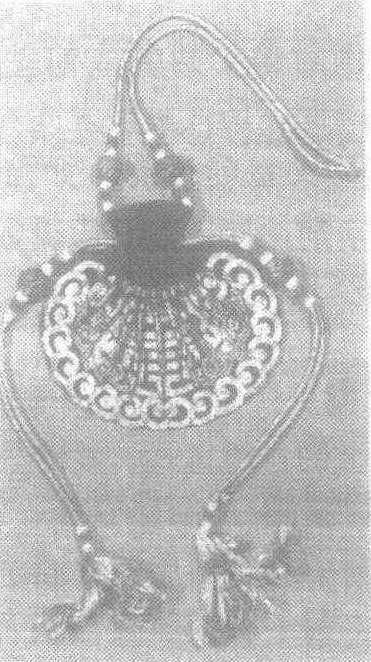佩鱼制
唐宋两代五品以上官员佩系鱼符的制度。从唐代初年开始,中央政府和地方官员之间,常用一种三寸左右长的分左右两片的铜制鱼形饰物,作为彼此联络调动军队、升迁官员的凭信。鱼符的左片留在中央政府掌握,右片则由地方官员保存。遇有事情则以左右合符为证。同时官员出入宫禁时,为防作伪,中央政府也发给鱼符。太子玉鱼符; 亲王金鱼符;其余官员用铜鱼符。上刻写官员的职位姓名。左片留存宫中,右片由官员随身携带。出入宫门时,以便核查身份,也要左右合符。官员离职时要交出鱼符。鱼符实际上是古代虎符的变形,因唐高祖的祖父名虎,为避讳而不得不改用鱼符。又因据传说鱼目昼夜不闭,故取其常备不懈之意,而采用鱼符。从唐高宗开始,发给五品以上官员鱼袋,以便随身携带鱼符。鱼袋佩系于腰间的革带上,内盛鱼符。唐代规定,三品以上凡穿紫袍者,可佩用金饰鱼袋; 五品以上凡穿绯袍者,则佩用银饰鱼袋。这即是唐代的章服制度。宋代沿用佩鱼制,穿紫服的官员仍用金鱼袋,穿绯服的官员用银鱼袋。但宋代的鱼袋流为纯粹的装饰,已不用盛装鱼符了,只在袋上用金银装饰出鱼形,完全成为一种区别贵贱等级的标志,不再作为符契使用。

清平金绣荷包